Vesta Asteroid Fragments
Part of Hall of Meteorites.
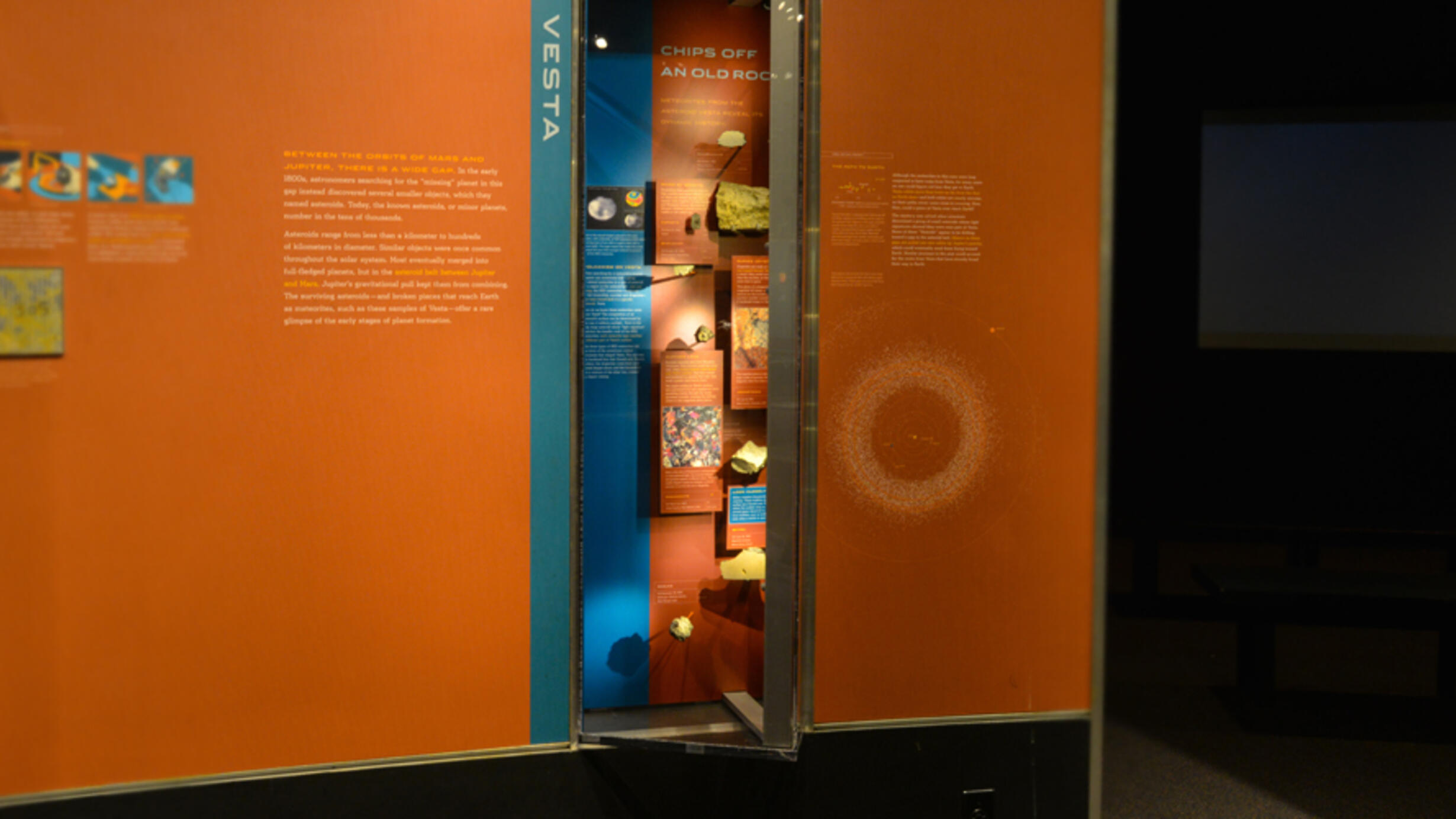
In the early 1800s, astronomers searching for the “missing” planet in this gap instead discovered smaller objects, which they named asteroids. Today, the known asteroids, including "dwarf planets" Ceres and Vesta, number nearly a million.
Asteroids range from pebble sized to 950 kilometers (590 miles) in diameter. Similar objects were once common throughout the solar system. Most eventually merged into the full-fledged planets, but in the asteroid belt between Jupiter and Mars, Jupiter’s gravitational pull keeps them from combining. The surviving asteroids—and broken pieces that reach Earth as meteorites, such as these samples of Vesta—offer a rare glimpse of the early stages of planet formation.
The Path to Earth
Although the meteorites in this case were long suspected to have come from Vesta, for many years no one could figure out how they got to Earth. Vesta orbits more than twice as far from the Sun as Earth does—and both orbits are nearly circular, so their paths never come close to crossing. How, then, could a piece of Vesta ever reach Earth?
The mystery was solved when scientists discovered a group of small asteroids whose light signatures showed they were once part of Vesta. Some of these "Vestoids" appear to be drifting toward a gap in the asteroid belt.
©AMNH
Objects in these gaps are pulled into new orbits by Jupiter's gravity, which could eventually send them flying toward Earth. Similar journeys in the past could account for the rocks from Vesta that have already found their way to Earth.
©AMNH
Volcanism on Vesta
When searching for a meteorite's source, experts can sometimes link a group of related meteorites to a type of asteroid or a region in the asteroid belt. Just one group, the HED meteorites—composed of the howardites, eucrites and diogenites—has been traced back to a specific asteroid, Vesta.
How do we know these meteorites came from Vesta? The composition of an asteroid's surface can be determined by the way it reflects sunlight. Vesta is the only large asteroid whose "light signature" matches the basaltic rock of the HED meteorites; each meteorite type matches a different part of Vesta's surface.
The three types of HED meteorites tell the story of the sometimes violent processes that shaped Vesta. The eucrites are hardened lava that flowed onto Vesta's surface; the diogenites come from rock buried deeper down; and the howardites are a mixture of the other two, created by impact mixing.
P. Thomas, B. Zellner and NASA
In This Section
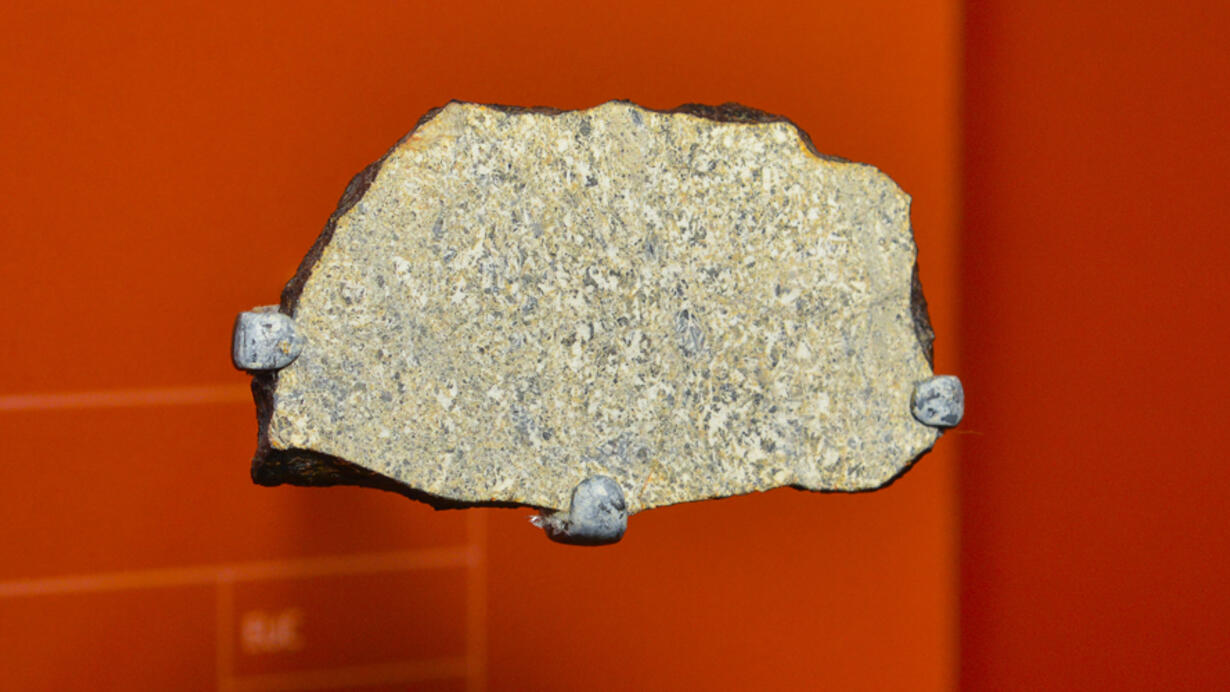
Millbillillie
MILLBILLILLIE
Fell October, 1960 Wiluna district, Western Australia, Australia
EUC
AMNH 4700
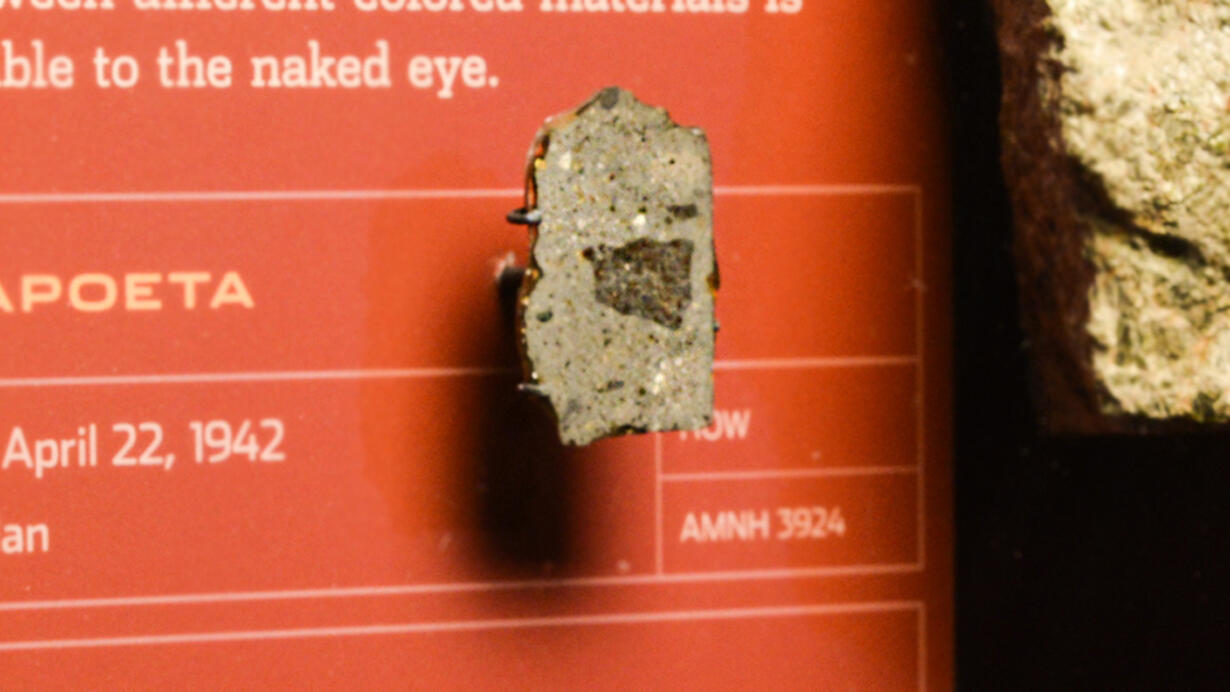
Kapoeta
Mixed by Impacts
Howardites were created by impacts that crushed and mixed different parts of Vesta and melted enough rock to cement them together. In both Kapoeta and Bholghati, the contrast between different colored materials is visible to the naked eye.
KAPOETA
Fell April 22, 1942
Sudan
HOW
AMNH 3924
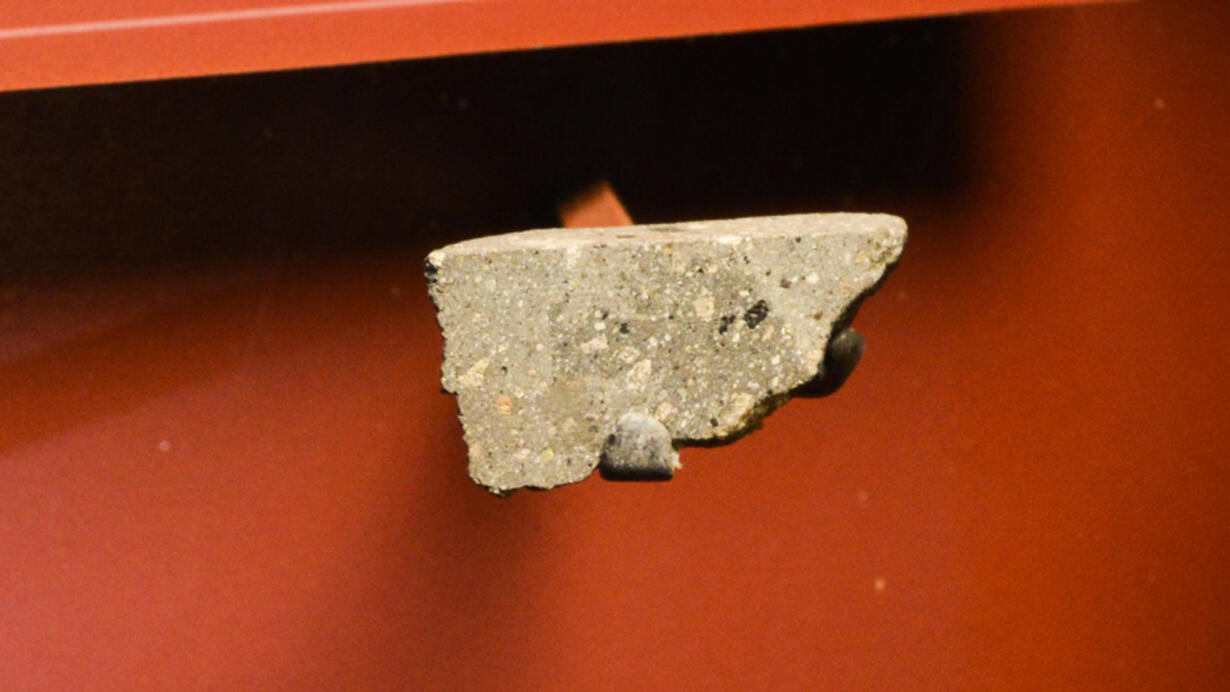
Bholghati
BHOLGHATI
Fell October 29, 1905 Deoli pargana, Maurbhanj, Orissa, India
HOW
AMNH 4243
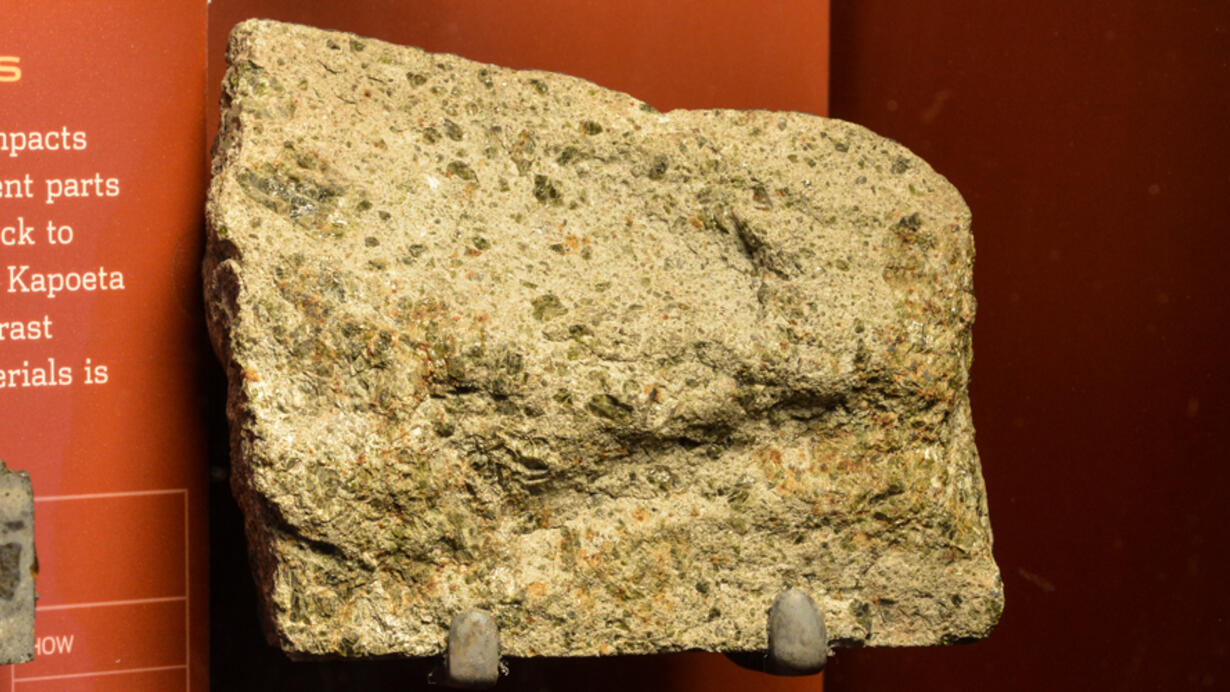
Johnstown
Buried by Crystals
Diogenites are made of molten rock that was trapped beneath Vesta's surface. As a result, they cooled much more slowly than the eucrites, so their crystals had more time to grow.
This photo of a diogenite is magnified 40 times—exactly the same amount as the eucrite. The eucrite's smaller crystals indicate that it hardened closer to Vesta's surface.
JOHNSTOWN
Fell July 6, 1924 Weld County, Colorado, USA
DIO
AMNH 2494
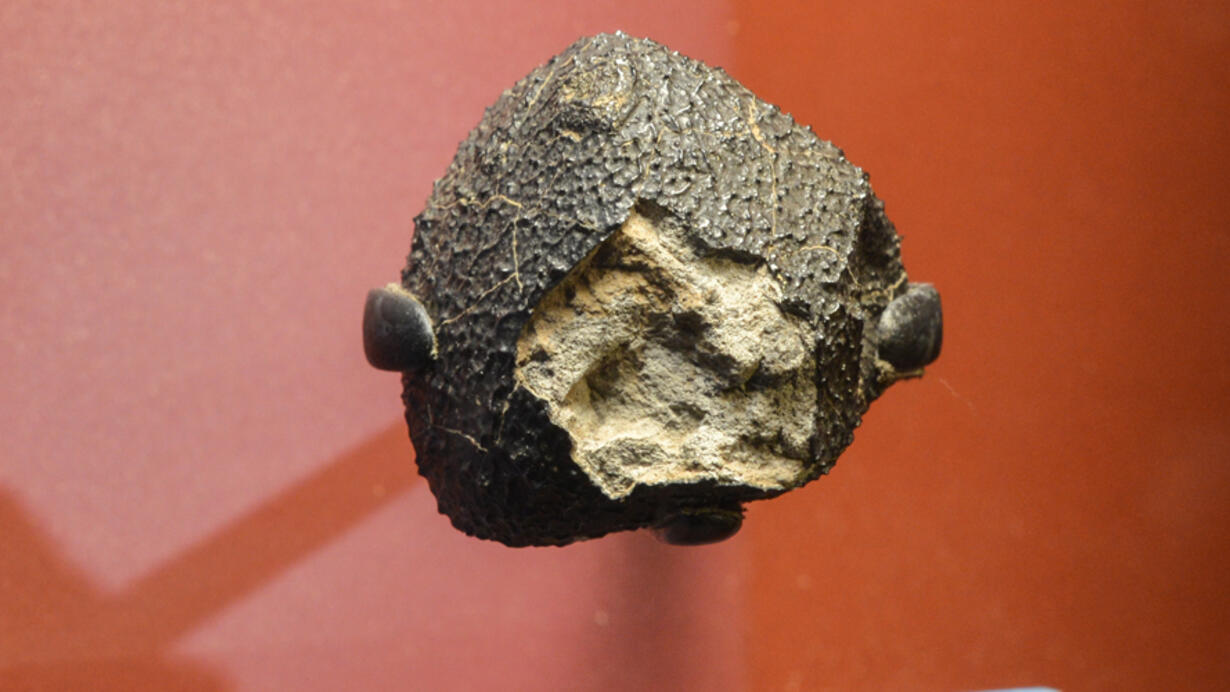
Pasamonte
Surface Lava
Eucrites resemble lava from Hawaiian volcanoes. They formed much the same way, when molten basaltic rock flowed onto Vesta's surface. This lava cooled and hardened so quickly that only very small crystals had time to form.
The rapid cooling on Vesta's surface also prevented iron and magnesium from spreading evenly through the larger pyroxene crystals, causing the shifting colors in the magnified photo at right.
PASAMONTE
Fell March 24, 1933 Union County, New Mexico, USA
EUC
AMNH 3759
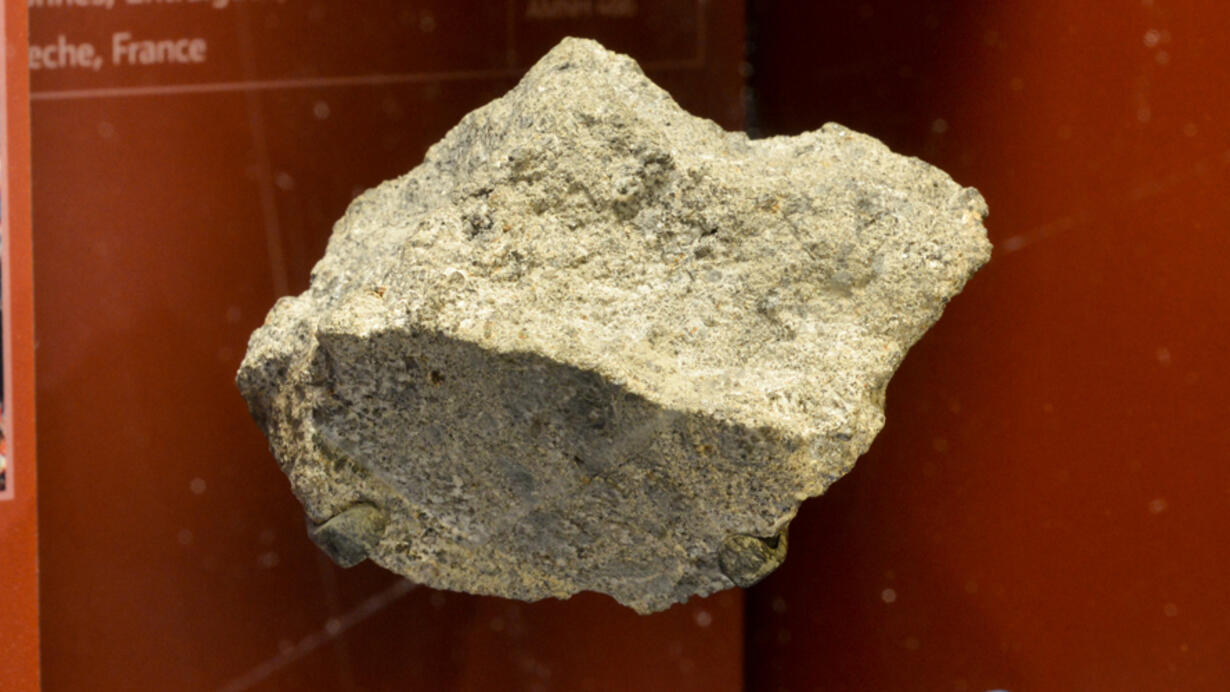
Juvinas
JUVINAS
Fell June 15, 1821 Libonnes, Entraigues, Ardeche, France
EUC
AMNH 466
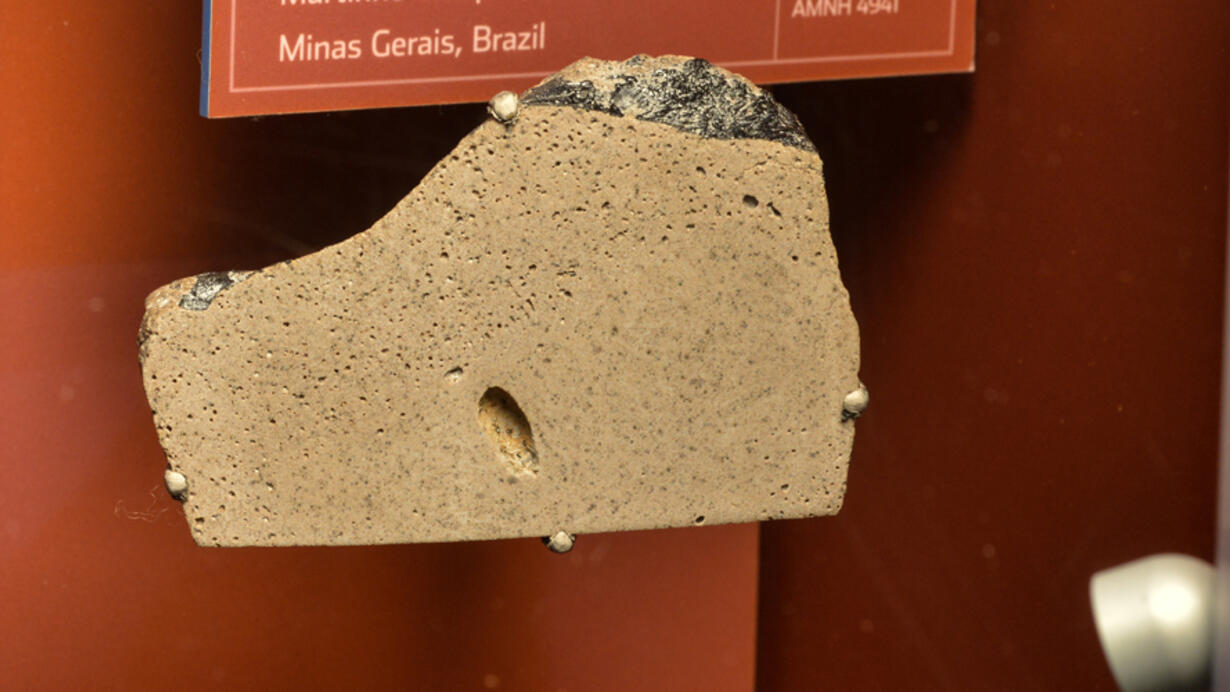
Ibitira
Look Closely
Ibitira contains thousands of bubbles, or vesicles. These bubbles formed when molten lava flowed onto Vesta's surface, where the sudden drop in pressure caused gases dissolved in the lava to form bubbles-just as bubbles form in soda when a bottle is opened.
IBITIRA
Fell June 30, 1957 Martinho Campos, Minas Gerais, Brazil
EUC
AMNH 4941
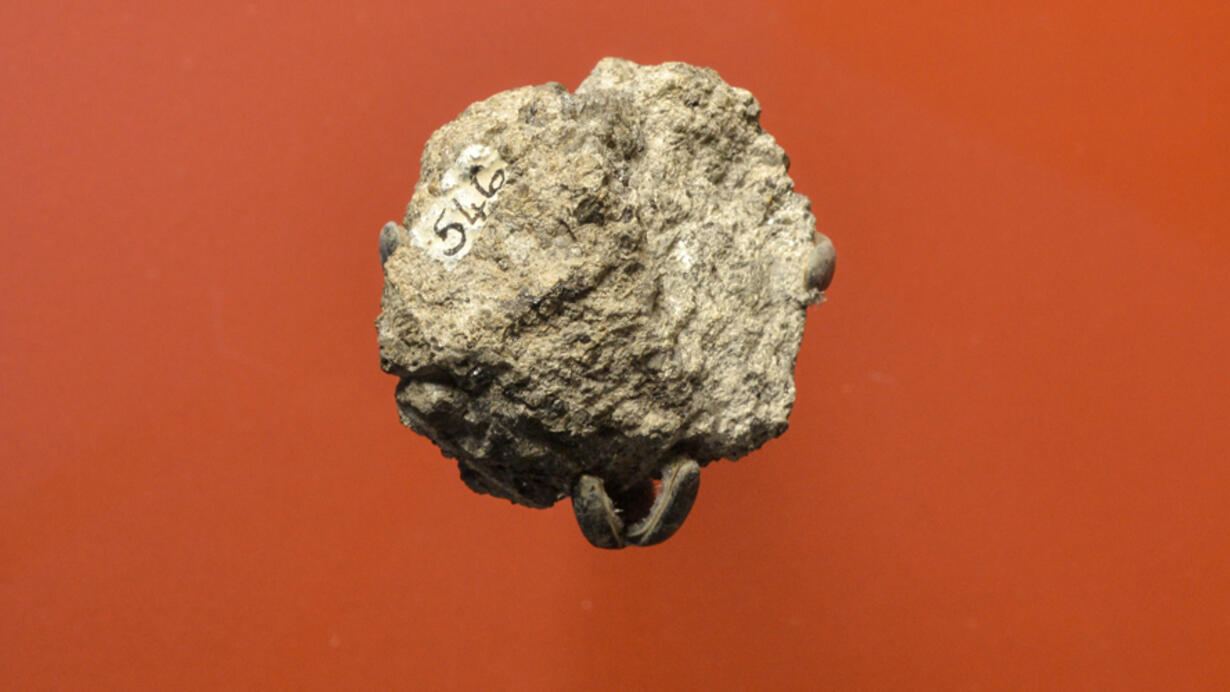
Shalka
SHALKA
Fell November 30, 1850 Bishnupur, Bankura district, West Bengal, India
DIO
AMNH 546